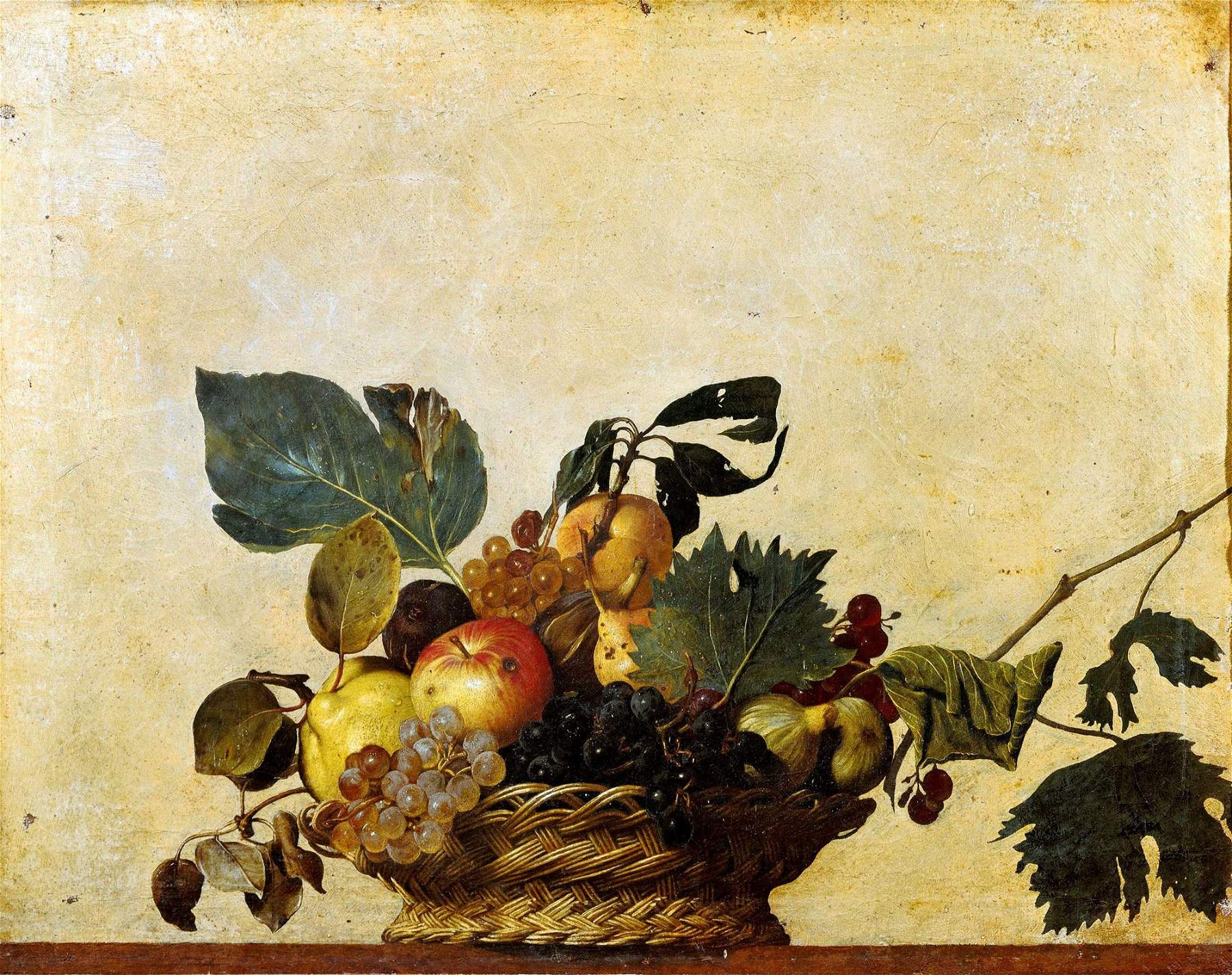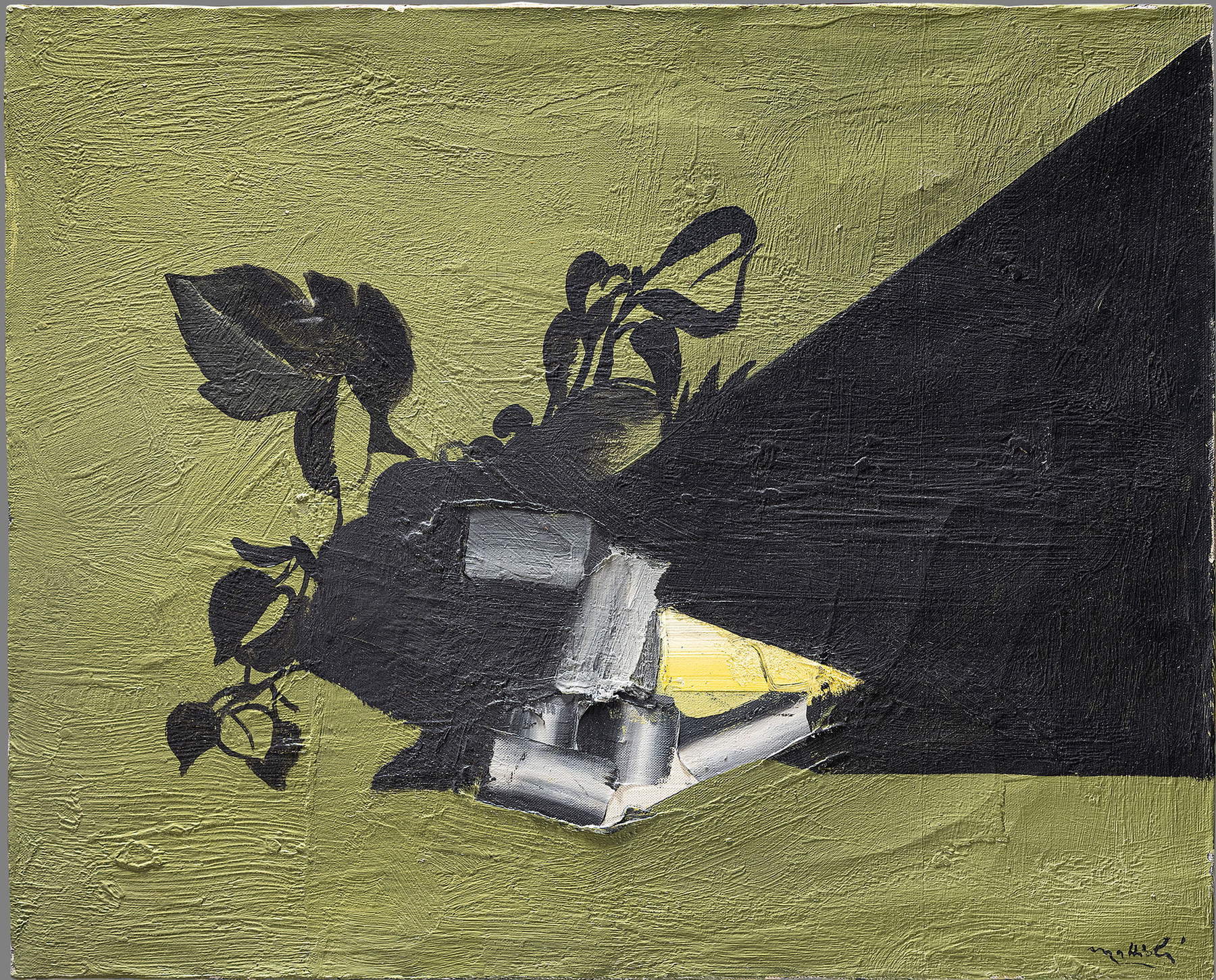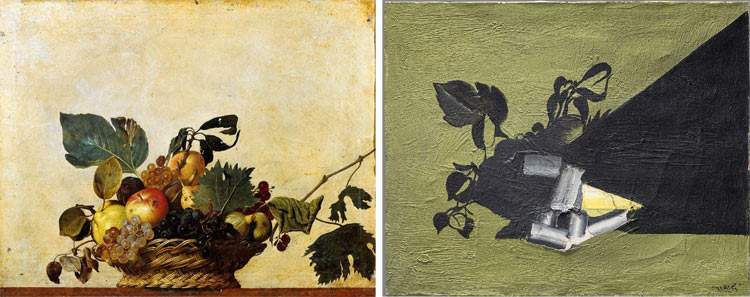Mattioli/Caravaggio. The lightful fruit, is the title of the exhibition conceived and organized by the Carlo Mattioli Foundation of Parma, with the contribution of SCIC Italia, UniCredit Wealth Management, and Arti grafiche Castello, scheduled from May 7 to July 3, 2022, at the Pinacoteca Ambrosiana in Milan: twenty oil paintings by Carlo Mattioli, one of the Italian masters of twentieth-century art, that dialogue with Caravaggio’s The Basket of Fruit, preserved at the Milanese museum. The courage to confront an absolute master such as Caravaggio and one of his most iconic works lies at the origin of a cycle of paintings and drawings that Mattioli wanted to present at the 1968 Venice Biennale, but which remained visible only on the day of the inauguration, due to the social and political protest that developed that year and also involved sectors such as culture and art. Carlo Mattioli’s Caravaggio’s Baskets thus returned to the silence of the studio in which they were born.
The exhibition itinerary, divided into three spatial and installation thematic areas, is proposed as a narrative unfolding through Mattioli’s contemporary suggestions. The analytical theme and the creative process are set up in the first two rooms within seven showcases, which offer an evocative view of the materials used by the painter. The realization theme is concentrated in the third room in direct dialogue with Caravaggio’s Basket and is achieved by an evocative setting based on the stripping suspended in the half-light of the room. The conceptual theme, in the fourth room, offers a view of the latest works related to the Canestra and, slightly secluded a video section, which narrates the evolution of Mattioli’s exploratory process.
Mattioli confronts the genre and the Ambrosian model while remaining in a personal limbo, suspended between a figuration that will never be complete again and an abstraction to which one cannot completely abandon oneself. The relationship with the model becomes a long study filtered through the image of a pile of boxes and leaves resting on a perch in his studio. Mattioli approaches the seventeenth-century model, first declining it in a deep study related to volumetry and light, then enlarging its details, with the basket becoming the fulcrum around which all his research revolves. The title, The lightful fruit, proposes to play on the double vision and perception of the light that illuminates the basket of fruit but through the filter of delicacy (delight), as if it were an intimate, closed and collected space. In the film sequences that accompany the actual exhibition, the works are gathered in an unreal space, a silvery space like a daguerreotype. This visual grammar aims to highlight the basic elements that the artist used, without placing the didactic details of the document at the center of the discourse. Quotations, shadows, lights, and an obsessive theme to decline his own idiom, beyond Caravaggio’s work.
Accompanying the exhibition is a catalog (published by Tacuino) with an unpublished text by Professor Claudio Strinati and a contribution by Roberto Tassi.
Social FB @fondazionecarlomattioli IG fondazionecarlomattioli Website: fondazionecarlomattioli.com Information: tel. 02.806921; contatti@ambrosiana.it


“Mattioli/Caravaggio. The lightful fruit at the Pinacoteca Ambrosiana,” says Marcella Mattioli, President of the Carlo Mattioli Foundation and daughter of the artist, “is the first step in the journey that the Foundation has decided to undertake by rereading Mattioli’s work through new forms of communication and a series of monographic exhibitions with original paintings and multimedia technologies.”
“This initiative,” adds Anna Zaniboni Mattioli, vice-president of the Foundation, “confronts the past, but with the contradictory, lucid and neurotic gaze of today’s man, making the desire to ’show’ Carlo Mattioli’s contemporary instances more uncovered.”
“The Veneranda Biblioteca Ambrosiana,” says Monsignor Alberto Rocca, director of the Pinacoteca Ambrosiana, “has welcomed this project with great favor, in the certainty that art knows how to establish a dialogue that knows no boundaries of time, even speaking different languages as different, but of equal greatness, can be the works of Caravaggio and Mattioli.”
“We are honored to be part of this project,” says Maria Costanza Marconi Fornari, head of Marketing and Communications at SCIC Italia, “and to be able to pay homage to Mattioli’s work to which we share the same territorial and cultural roots. It will be interesting to witness the comparison between Mattioli’s material and abstract painting and one of the most representative paintings of Caravaggio’s work.”
 |
| Milan, at the Ambrosiana, Caravaggio's Canestra di frutta dialogues with Carlo Mattioli |
Warning: the translation into English of the original Italian article was created using automatic tools. We undertake to review all articles, but we do not guarantee the total absence of inaccuracies in the translation due to the program. You can find the original by clicking on the ITA button. If you find any mistake,please contact us.